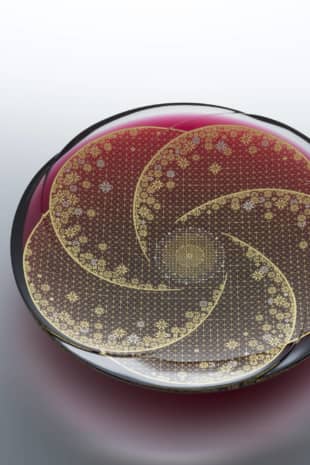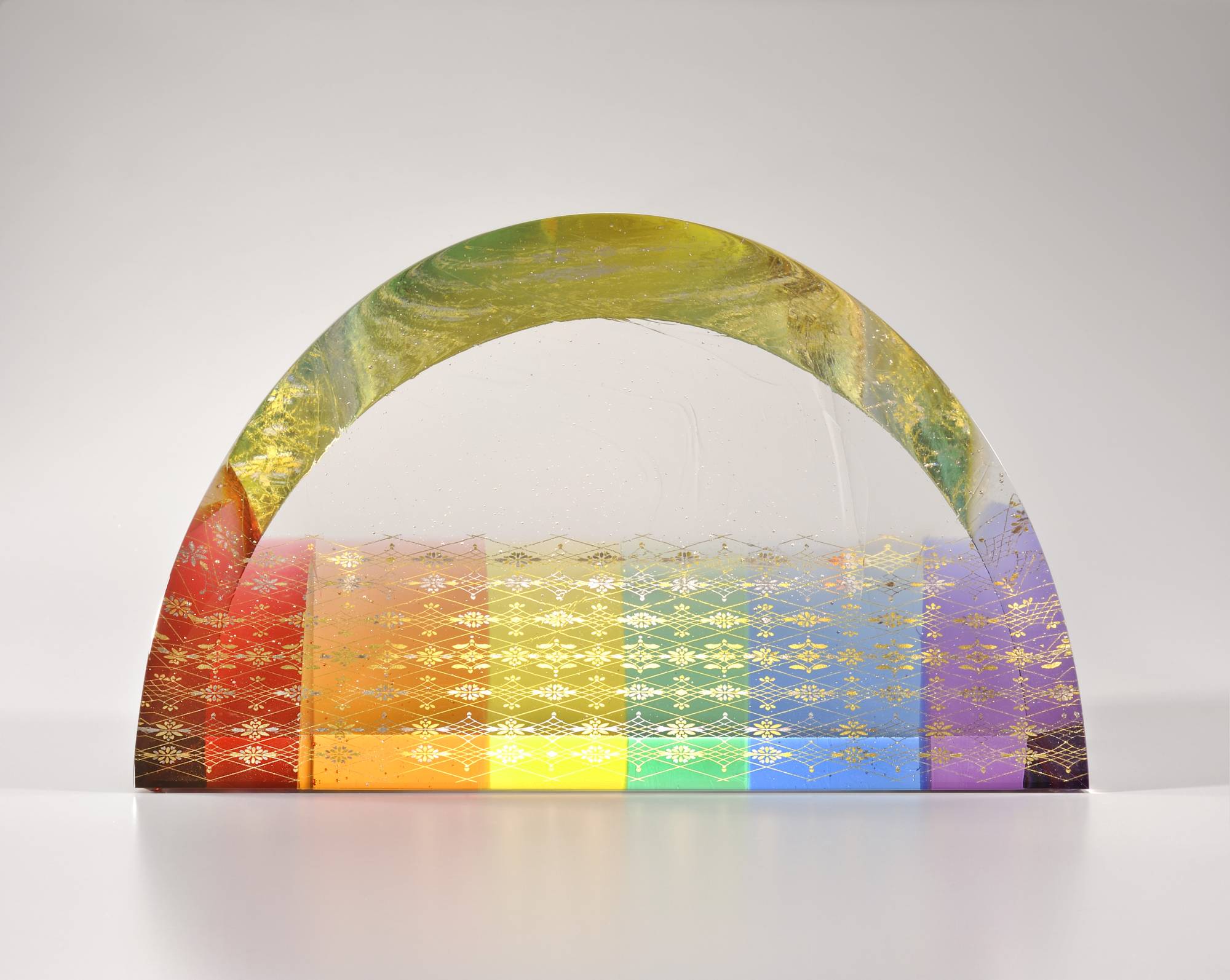
The British Museum’s glass collection includes a bowl with gold-leaf patterns that is estimated to have been made around 250 B.C. The gold leaf is sandwiched between two layers of glass, but the layers were never fully fused together. When two pieces of glass are curved, they are extremely difficult to fuse, and that feat has remained a holy grail for glassmakers through the ages.
The artist who finally achieved that goal was Akane Yamamoto. Fascinated by the craft of kirikane, in which very fine strips of metals like gold and platinum are used to form decorative patterns, she set out to incorporate the technique in her shaping of glass. Through trial and error, she succeeded in devising a way to set three-dimensional gold kirikane ornaments as if they were floating between two glass layers. A major challenge was that the melting temperature of gold is not much different from that of glass, so her timing had to be absolutely perfect to keep the gold patterns from losing shape. She accumulated a vast array of data correlating such factors as the size of a piece and the speed at which the kiln heats up. All that effort paid off when, in London in 2014, she exhibited at Collect, the International Art Fair for Modern Craft and Design. British glassmakers praised her creation as both a beautiful work of art and an awe-inspiring technical triumph.


















With your current subscription plan you can comment on stories. However, before writing your first comment, please create a display name in the Profile section of your subscriber account page.